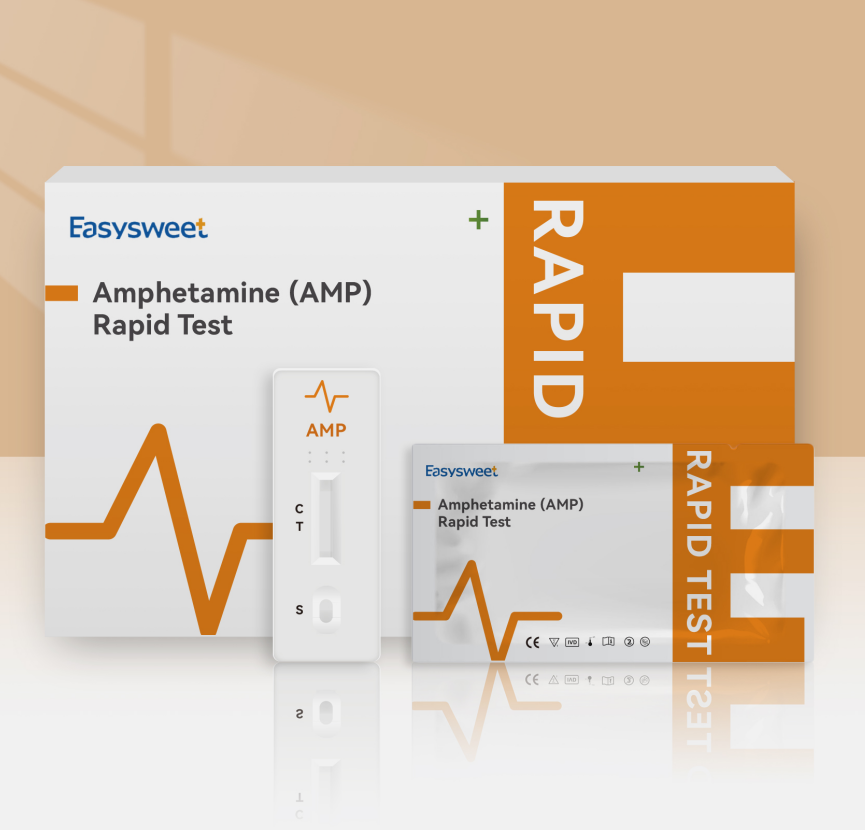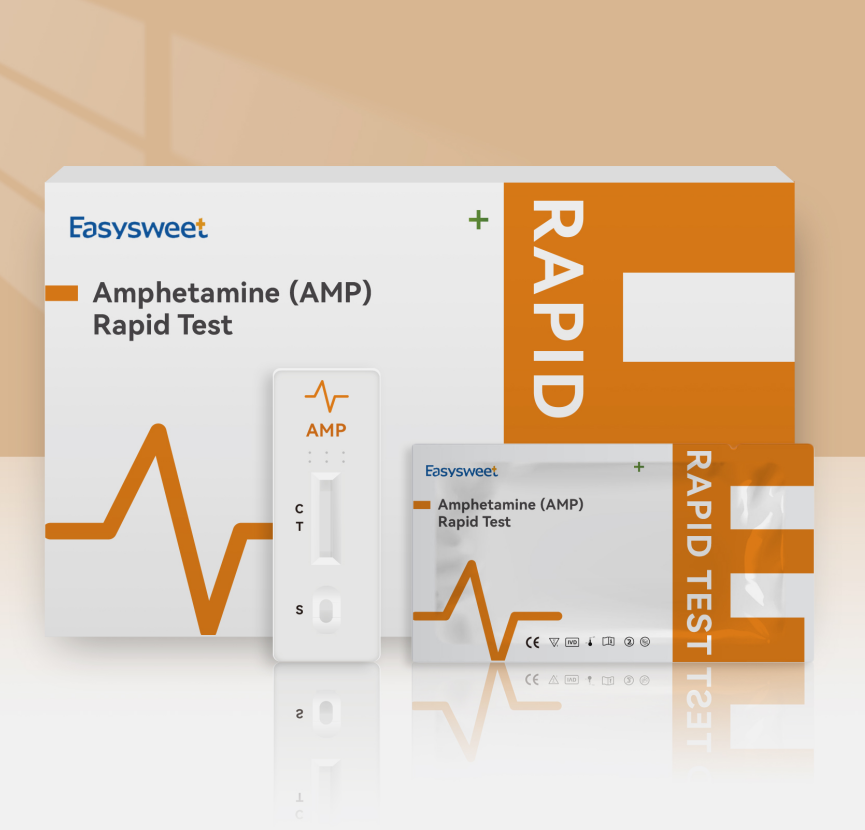Easysweet Amphetamine (AMP) Rapid Test for the qualitative detection of amphetamine and its metabolites (AMP) in human urine with a minimum sensitivity cut-off level of 1000 ng/ml, as standard by NIDA, World Health Organization and SAMHSA.
The Easysweet Amphetamine (AMP) Rapid Test is a rapid, qualitative, competitive binding immunoassay for the detection of amphetamine (AMP) metabolites in human urine. The test rapidly confirms the presence of amphetamine in a subject sample with a minimum cut-off sensitivity level of 1000 ng/ml amphetamine. Any positive test should be confirmed by a qualified healthcare professional using quantitative methods.

Amphetamines are central nervous system stimulants whose effects include alertness, wakefulness, increased energy, increased blood pressure, decreased hunger, and overall well-being. High doses and long-term use can lead to higher tolerance, dependence, and addiction. The most common sources of amphetamines are prescription diet pills containing phentermine hydrochloride (Phentermine, Adipex-P, Fastin, Phentercot, Phentride, Zantryl). Although a legal prescription drug, amphetamines are often sold illegally on the streets as "drugs." For initial immunoassay results, the U.S. Department of Health and Human Services Mandatory Reference Guidelines require a cutoff value of 1000 ng/ml for total amphetamine metabolites. 8 All putative positive results should be confirmed at a cutoff concentration of 1000 ng/ml amphetamine.
Easysweet Amphetamine (AMP) Rapid Test
The Easysweet Amphetamine (AMP) Rapid Test utilizes a chromatographic absorption device in which a targeted drug or drug metabolite in a urine sample competes with a control derivative of amphetamine immobilized on a porous membrane for limited antibody sites. This is the scientific method of choice for qualitative analysis. During the assay, urine is mixed with the labeled antibody-dye conjugate and migrates through the test device. When amphetamine levels are below 1000 ng/ml (the detection cutoff sensitivity of the test), the unbound antibody-dye conjugate binds to the immobilized antigen conjugate in the test area ("T"), producing a pink color The rose-colored band of , indicates a negative result. Conversely, when amphetamine levels are above the detection limit, the antibody-dye conjugate binds to the free drug to form an antigen-antibody-dye complex. This complex competes with the immobilized antigen conjugate in the test area, preventing the appearance of a pink rosy band. Regardless of the test results, a color band is generated in the control region ("C") by a non-specific sandwich dye coupling reaction. This band serves as a built-in quality control by demonstrating antibody recognition, verifying that the reagents are chemically active, and confirming that the test was performed correctly.
How to use Easysweet Amphetamine (AMP) Rapid Test:
The amphetamine test device and dropper pipette are individually sealed in foil bags with full instructions.
Collect a urine sample from the test subject using a suitable clean container (preferably a glass container).
Refrigerated samples or other materials should be equilibrated to room temperature prior to testing.
Open the foil pouch at the notch, remove the test device, and affix the sample ID to the device.
Holding the dropper vertically, add 3 full drops of urine to the sample and wait 5 minute.
Positive: One (1) pink rose band appears in the control area and no band appears in the test area. A positive result indicates an AMP (amphetamine) level of 1000 ng/ml or higher in the test urine sample.
Negative: One band appears in the test area and one band appears in the control area. A negative result indicates a detection sensitivity for AMP (amphetamine) levels below 1000 ng/ml. Important: Any line that appears in the test area, no matter how faint, can confirm a negative test result.
Invalid: The test is invalid if there is no visible visible band in both the test area and the control area, or if there is a visible band in the test area but not in the control area. In this case, iretest is recommended.
Samples could be provided on request.


